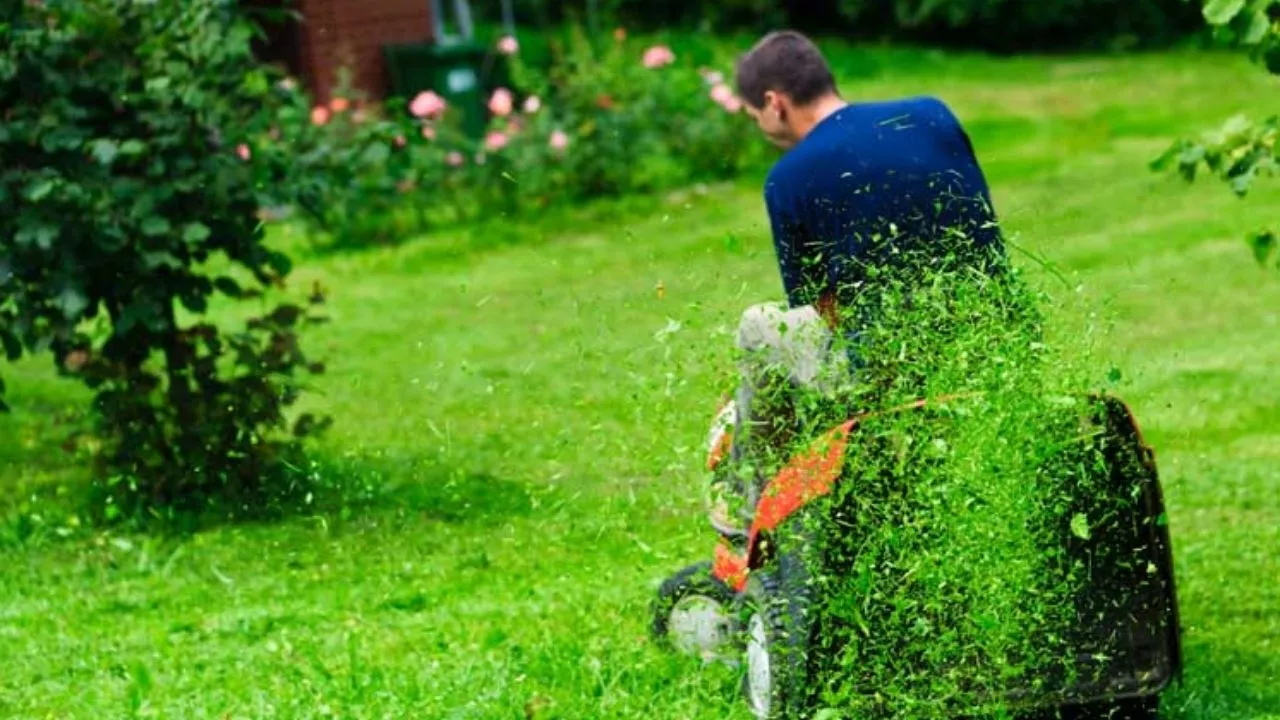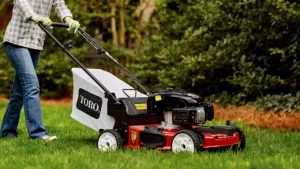When it comes to choosing the best way to discharge clippings from a lawn mower, there are two main options: mulching and side discharge.
In this article we are cover what’s the major deference between mulching and side discharge.
Mulching blades chop clippings into very small pieces that are then deposited back on the lawn, where they quickly decompose and add organic matter to the soil. Side discharge simply sends clippings flying out the side of the mower, which can create an unsightly mess, especially if done near sidewalks or driveways.
What Is The Difference Between Mulching and Side Discharge?
Mulching: Mulching and side discharge are two different ways to deal with the cut grass on your lawn. Mulching means that the clippings are chopped up and left on the ground to decompose and provide nutrients for the lawn. Side discharge means that the clippings are blown away from the lawn, usually into a yard waste bin.
Mulching is better for the environment because it doesn’t produce any waste, while side discharge creates piles of clippings that need to be disposed of. Mulching also helps keep the soil moist, while side discharge can cause it to dry out.
Side Discharge: Side discharge is better for your lawn, but it’s more work. A side discharge mower can be used to mulch your grasses and then return them to the soil, but you have to do this manually. Side discharge can cause soil erosion and reduces the quality of your lawn.
Mulching Vs Side Discharge: Which is Better for Your Lawn?
Mulching and side discharge are two common ways to dispose of the clippings from your lawnmower. Both have their own benefits, but which one is better for your lawn?
Mulching leaves the clippings on the ground where they break down and act as a natural fertilizer. This is good for the lawn because it recycles the nutrients and helps keep the soil healthy. Mulching also helps keep the grass blades upright, making them less susceptible to disease.
Side discharge, on the other hand, blows the clippings away from the lawn. This can be good or bad, depending on your situation. If you have a lot of trees or other obstacles nearby, side discharge can blow the clippings into those areas and create a mess.
Mulching Explained:
Benefits of Mulching
Mulching is a practice that has been used for centuries to improve the health of plants and soil. Recently, mulching has become a popular way to side discharge leaves and grass clippings. Mulching has many benefits, including:
1. It helps retain moisture in the soil, which reduces the need for watering.
2. Mulching prevents the growth of weeds, which saves time and money spent on weed control.
3. The organic matter in mulch decomposes over time, which releases nutrients into the soil that help plants grow healthy and strong.
Downsides of Mulching
Mulching has many benefits for the home gardener, but there are a few downsides to consider before making a decision about whether to mulch or side discharge.
- Mulching saves time by keeping the garden free of weeds, and it also helps retain moisture in the soil. However, mulching can also create a breeding ground for pests and diseases if not done properly.
- Another downside to mulching is that it can trap moisture and create a hospitable environment for fungal growth. If you choose to mulch, be sure to use organic materials that will decompose over time so that the soil can breathe.
Side-discharge Explained:
Benefits of Side Discharge
There are many benefits of side discharge when it comes to lawn care.
- The first benefit is that the grass clippings will be dispersed evenly across the yard, rather than all in one spot. This is because the blades on a side discharge mower are horizontal instead of vertical, like on a mulching mower. This means that there is less of a chance for the clippings to get caught in the mower and create a clump.
- Another benefit of side discharge is that it helps to keep your lawn healthy. Grass clippings are a great source of nitrogen, which is essential for plant growth. When you mulch your clippings, they decompose and release their nutrients back into the soil. This can help keep your lawn looking green and healthy all year long.
Finally, side discharge is a more efficient way to mow your lawn.
The Downside of Side Discharge
- The downside of side discharge is that clippings can end up in flower beds and gardens. If the clippings are not mulched, they can form a mat on the soil that can prevent water and air from reaching the plants’ roots. Clippings also can contain weed seeds, so it’s best to remove them from gardens before they have a chance to germinate.
Should You Bag Grass Clippings?
Grass clippings can be a valuable resource for your garden, or they can be a nuisance. What you do with them depends on how much grass you have and how much time you want to spend managing them.
If you have a small lawn, it’s probably easiest to just bag the clippings and get rid of them. But if you have a lot of grass, leaving the clippings on the ground can provide important nutrients and organic matter that help your lawn grow healthy and strong.
It’s important to keep in mind that when you leave the clippings on the ground, they will decompose and create a layer of organic matter on top of the soil. This can slow down water absorption and make it harder for your lawn to breathe.
Grass Clippings for A Healthier Lawn
Grass clippings are one of the most valuable tools for creating a healthier lawn. When left on the lawn, they act as a natural mulch, helping to retain moisture and suppress weeds. In addition, they provide nutrients to the grass, which helps it to stay healthy and strong.
FAQ
Are Side-Discharge, Mulching, and Bagging Mowers All the Same?
No. Side-discharge, mulching, and bagging mowers all have different features that make them unique.
Mulching mowers chop up the grass they cut, while side discharge mowers leave large clumps of the grass. However, mulching mowers leave clippings in finer pieces so they break down more rapidly and don’t compact as rapidly. When choosing a side discharge mower, you may need to run the clippings through it multiple times in order to mulch it.
Is a Mulch Mower Better?
The consensus is yes, because mulching mowers can handle long grass better than their side discharge counterparts. However, side-discharge mowers are often more affordable and easier to start and maintain.
Will Mulching Blades Work With Side Discharge?
Yes. Side-discharge mowers often feature mulching blades, so you can use a side discharge mower to mulch. The downside is that mulching blades are less powerful and don’t work as well at cutting through long grass.
Can You Use High Lift Blades for Mulching?
Yes. High lift blades perform the same way as side discharge mowers, so you can use a mulching mower to cut long grass.
Is it worth getting an expensive mulching mower? Yes. An expensive mulching mower will get the job done more efficiently than an inexpensive one. A high-quality mulching mower with a strong motor and plenty of hoses can handle long grass without any trouble at all.
Conclusion
In conclusion, mulching vs side discharge is a personal preference. Mulching leaves behind nutrient-rich organic matter that helps to feed the soil and improve its structure. Side discharge does not provide these benefits, but it can be helpful in reducing the amount of time needed to mow the lawn. Ultimately, the best option depends on the needs of the individual homeowner.

